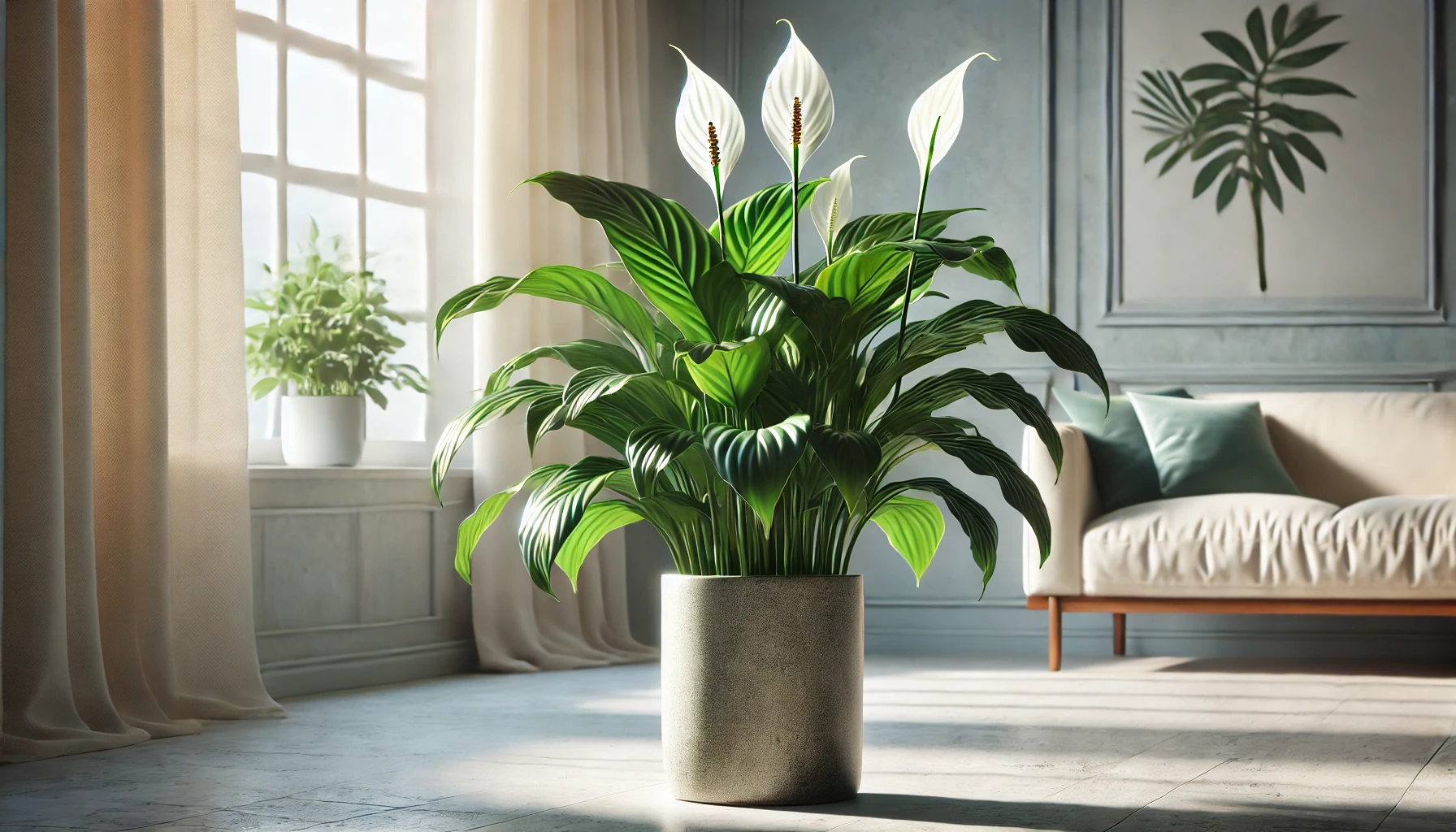
The Peace Lily, known scientifically as Spathiphyllum, is an elegant and easy-to-care-for houseplant. With its glossy, dark green leaves and striking white flowers, it adds a touch of serenity and beauty to any indoor space. Peace Lilies can grow up to 16 inches tall, with some varieties reaching up to 6 feet, making them suitable for both tabletops and floor displays.
A Rich History and Ideal Growing Conditions
Native to the tropical regions of the Americas and Southeast Asia, the Peace Lily has been cherished for its beauty and air-purifying qualities. It gained popularity as a houseplant due to its ability to thrive indoors and its elegant appearance. Peace Lilies grow best in warm, humid environments, similar to their native habitat. They thrive in bright, indirect light but can also tolerate low light conditions, making them versatile for different indoor settings.
Peace Lilies and Pets: Important Information
While Peace Lilies are a wonderful addition to your home, it’s crucial to note that they are toxic to pets. If ingested by cats or dogs, they can cause oral irritation, excessive drooling, vomiting, and difficulty swallowing. Therefore, it’s best to keep Peace Lilies out of reach of your furry friends to ensure their safety.
Best Practices for Caring for Your Peace Lily
When it comes to watering, Peace Lilies prefer consistently moist soil but not soggy. Water them thoroughly when the top inch of soil feels dry. During the growing season (spring and summer), this typically means watering about once a week. In the dormant season (fall and winter), reduce watering frequency. Peace Lilies enjoy high humidity levels. If the air in your home is dry, consider misting the leaves or placing the plant on a tray with pebbles and water to increase humidity around the plant.
A well-draining, all-purpose potting mix is ideal for Peace Lilies. They thrive in bright, indirect light but can also adapt to low light conditions. However, they should be kept out of direct sunlight to prevent leaf burn. Peace Lilies prefer temperatures between 65°F and 80°F and should be kept away from cold drafts and sudden temperature changes.
Common Problems and Remedies
Even with the best care, Peace Lilies can encounter some common issues. Yellowing leaves can be a sign of overwatering or underwatering. To remedy this, adjust your watering schedule accordingly and ensure the soil is well-draining. Brown leaf tips can be caused by dry air or the use of tap water with high levels of fluoride or chlorine. Increase humidity around the plant and use distilled or rainwater for watering.
Peace Lilies can be susceptible to pests such as spider mites, aphids, and mealybugs. Combat these pests with a water and mild soap solution or a neem oil spray. Additionally, Peace Lilies can suffer from root rot if the soil is too wet. If you notice a foul smell or mushy roots, remove the plant from its pot, trim any rotten roots, and repot it in fresh, well-draining soil.
Propagation and Benefits
Propagating Peace Lilies is relatively easy and can be done through division. When repotting, gently separate the plant into smaller sections, each with its roots, and plant them in individual pots. Peace Lilies are known for their air-purifying qualities. They can help remove toxins such as formaldehyde, benzene, and trichloroethylene from the air, making them a healthy addition to your home or office.
Final Thoughts
Peace Lilies are one of the most popular houseplants for a reason. They are not only beautiful and elegant but also easy to care for and beneficial to your indoor environment. Whether you’re a seasoned plant enthusiast or a beginner, Peace Lilies make a great choice. With their glossy leaves and striking white flowers, they add a touch of elegance to any space. Give them the right care, and they will reward you with their serene beauty and air-purifying benefits. So why not add a Peace Lily to your home and enjoy all the peace and tranquility it brings?
Stay connected with the world of plants! Subscribe to Phylofy for expert gardening tips, DIY projects, and eco-friendly inspiration. Join our community and nurture your love for nature. Don’t miss exclusive content and updates. Subscribe now!



